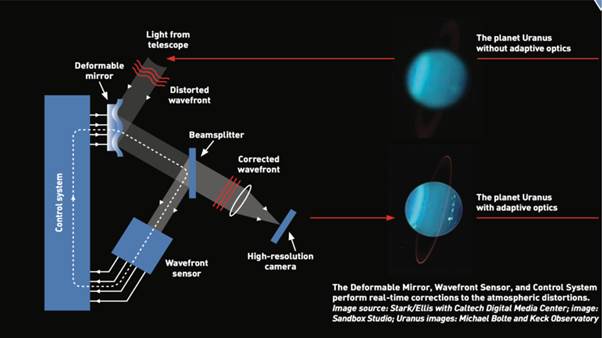A new online tool to create a comprehensive star catalogue for the Adaptive Optics (AO) system of the upcoming Thirty Meter Telescope (TMT), can enable this ground-based telescope– one of the largest to be operational in the next decade, generate sharper astronomical images.
The Thirty Meter Telescope, the Giant Magellan Telescope, and the European Southern Observatory’s Extremely Large Telescope represent the future of ground-based astronomy. India is a key partner in the TMT project, with India TMT Center at Indian Institute of Astrophysics (IIA) leading the national collaboration.
Telescopes on the surface of the Earth face the challenge of atmospheric distortion, affecting the quality of captured images. This is particularly crucial for telescopes with high light-collection capacities, like the TMT, which are sensitive to upper atmospheric disturbances. To counteract these distortions, the TMT will use an Adaptive Optics System (AOS) that continuously senses and adjusts for atmospheric changes to produce high-quality images. In order to do this, an all-sky catalogue of NIR stars is an essential requirement.
“The AOS system on TMT, known as the Narrow Field Infrared Adaptive Optics System (NFIRAOS), will be enhanced by a Laser Guide Star (LGS) facility,” explained Dr. Sarang Shah from IIA. “This facility will project up to nine lasers into the sky to create artificial guide stars. However, atmospheric turbulence affects these laser beams, so measuring atmospheric tip-tilt is uncertain. To correct these effects, the AO system requires feedback from three real stars, known as Natural Guide Stars (NGS).”
For optimal performance, simulations indicate that NFIRAOS requires at least three NGS within its field of view, each as bright as 22 magnitudes in the near-infrared J waveband. Currently, no such comprehensive catalogue of stars exists which will provide NGS in all-regions of the sky.
For optimal performance, simulations indicate that NFIRAOS requires at least three NGS within its field of view, each as bright as 22 magnitudes in the near-infrared J waveband. To ensure these requirements are met across all regions of the sky, a comprehensive catalogue of NIR stars is essential. Currently, no such catalogue exists that can reliably provide NGS for all sky regions, highlighting the critical need for the new tool developed by Indian researchers to create this all-sky NIR star catalogue.
Researchers at the Indian Institute of Astrophysics (IIA) in Bengaluru and their collaborators have developed an automated code that can be used as an online tool to create a catalogue of Near Infrared (NIR) stars.
“The automated code can compute the expected near-infrared magnitudes of stellar sources identified in various optical sky surveys using their optical magnitudes,” noted Dr. Smitha Subramanian, co-author and faculty at IIA.
Using multi-band optical photometry from the PAN-STARRS telescope, the researchers filtered and identified stars, predicting their near infrared magnitudes through innovative methods. They validated their approach using data from the UKIDSS survey of the United Kingdom Infrared Telescope, achieving over 85% accuracy in their NIR magnitude predictions.
“Our method shows great promise in generating the all-sky catalogue of NIR stars needed before TMT’s first run in the next decade,” added Dr. Sarang Shah the lead researcher.
India’s participation in the TMT collaboration involves three institutes: the Indian Institute of Astrophysics (IIA), Bengaluru, the Inter-University Center for Astronomy and Astrophysics (IUCAA), Pune, and the Aryabhatta Research Institute for Observational Sciences (ARIES), Nainital. This research was conducted at the India-TMT Coordination Center (ITCC), headquartered at IIA, Bengaluru, which is an autonomous institution under the Department of Science and Technology, Government of India. The detailed findings of this research were published in the Astronomical Journal.
For more information, please refer to the publication [DOI: 10.3847/1538-3881/ad517f](https://doi.org/10.3847/1538-3881/ad517f).
















